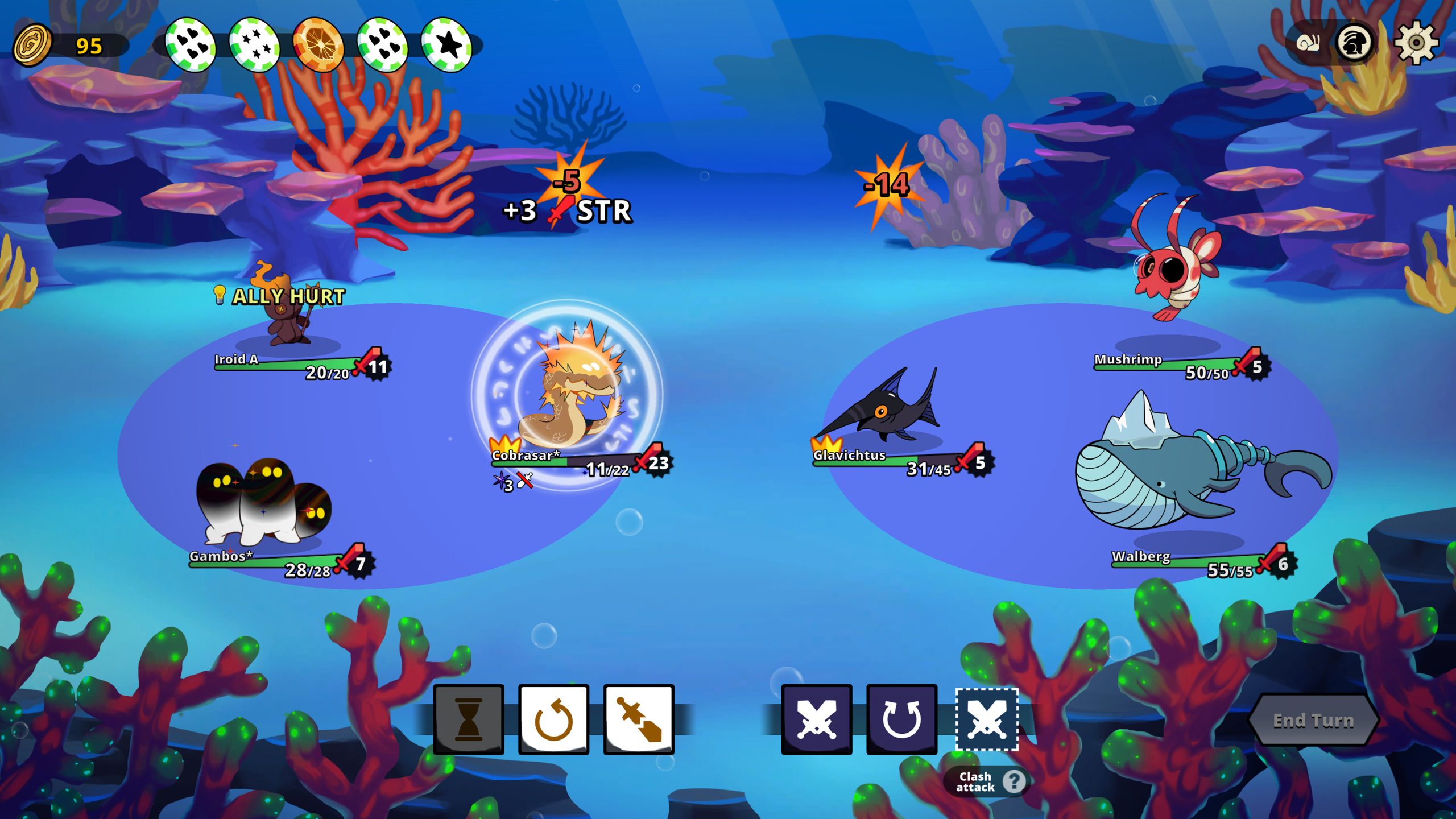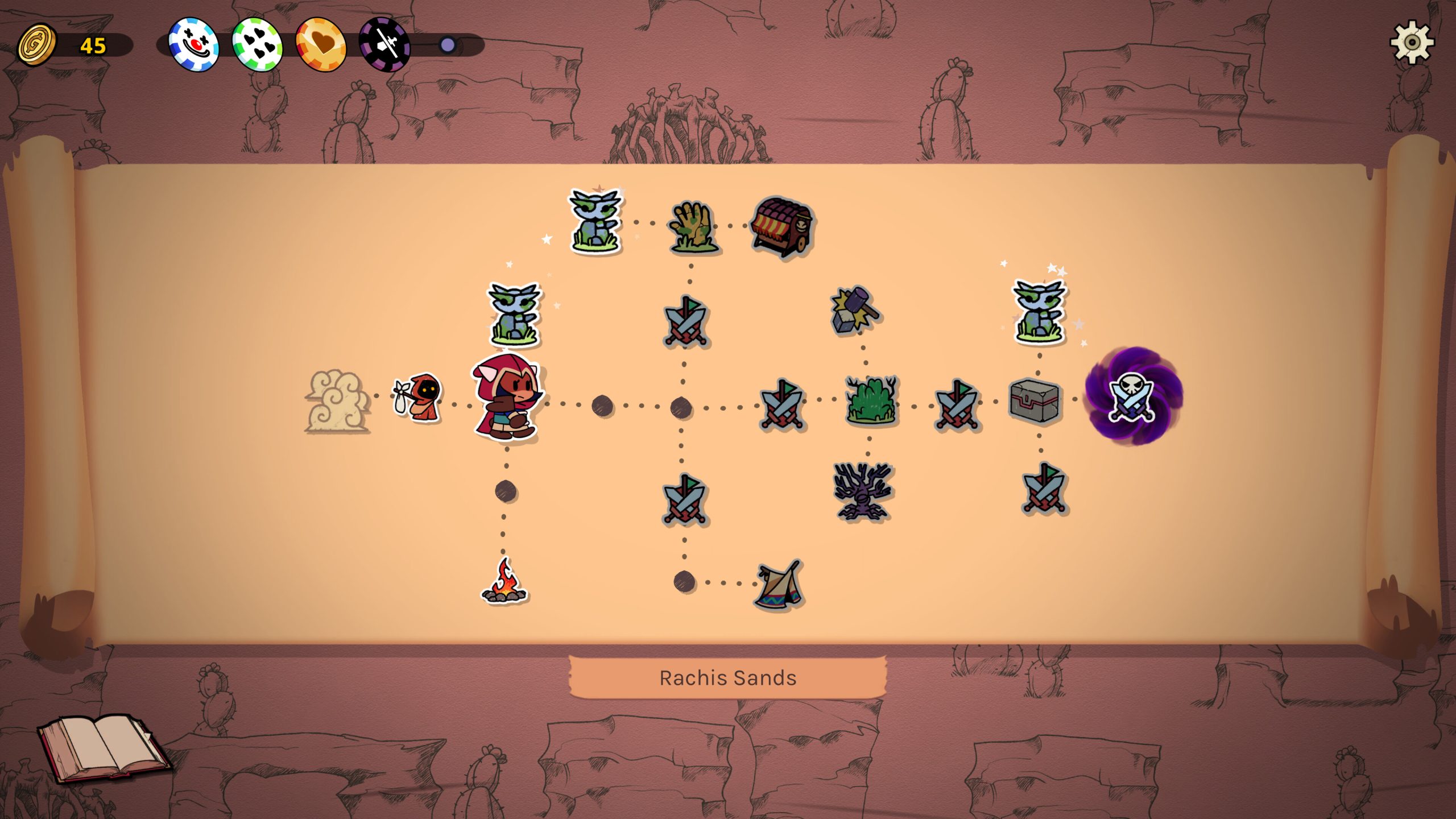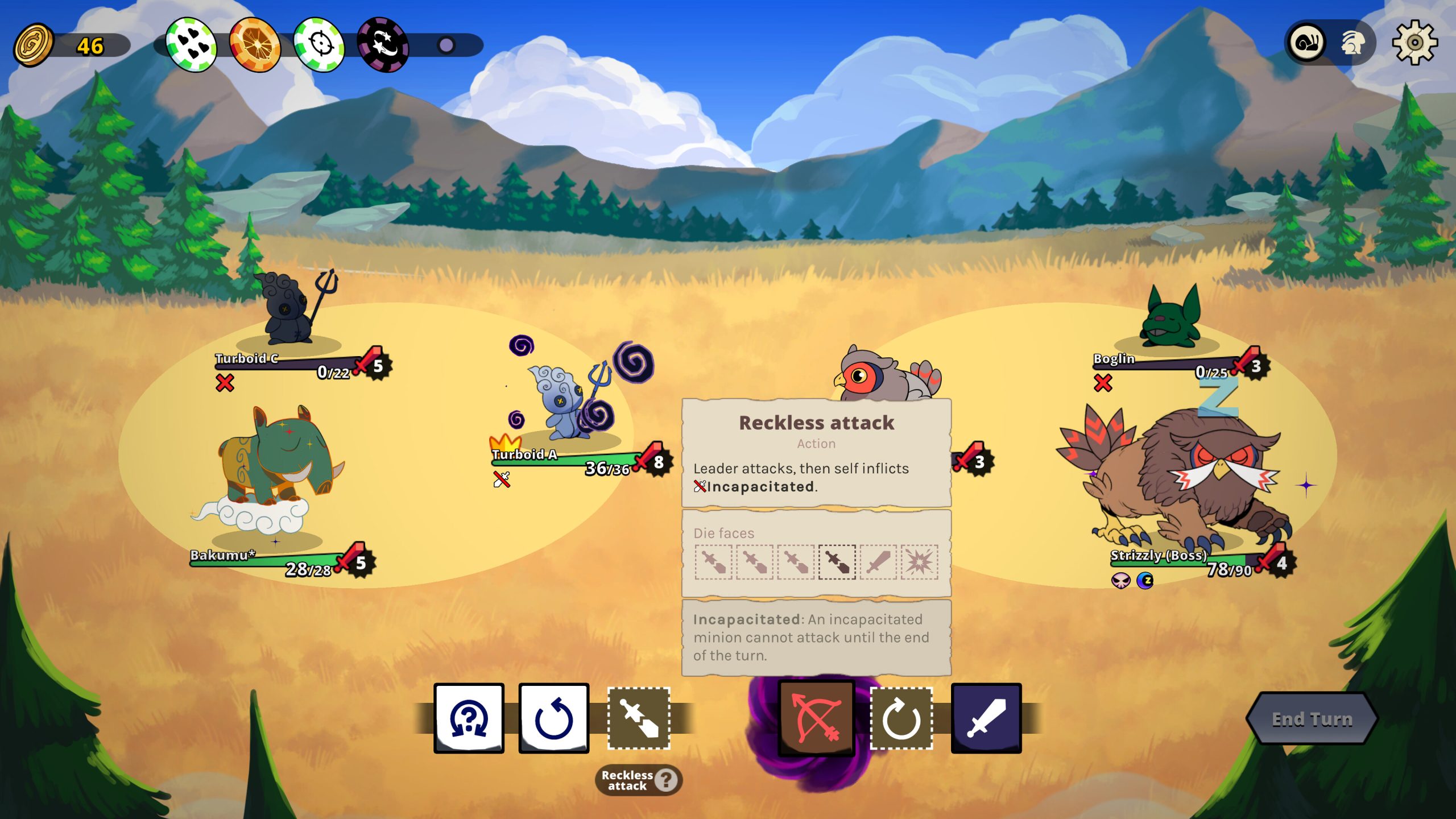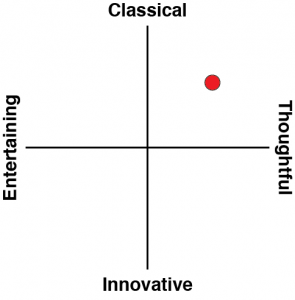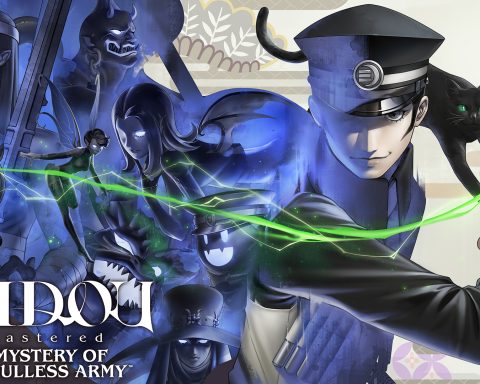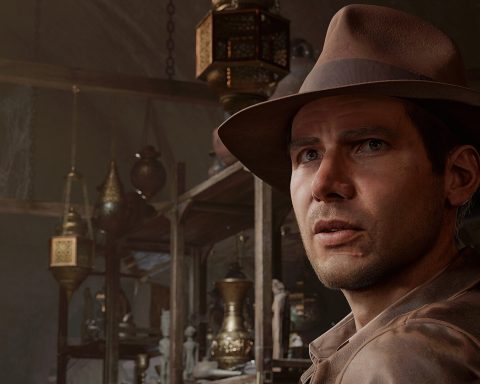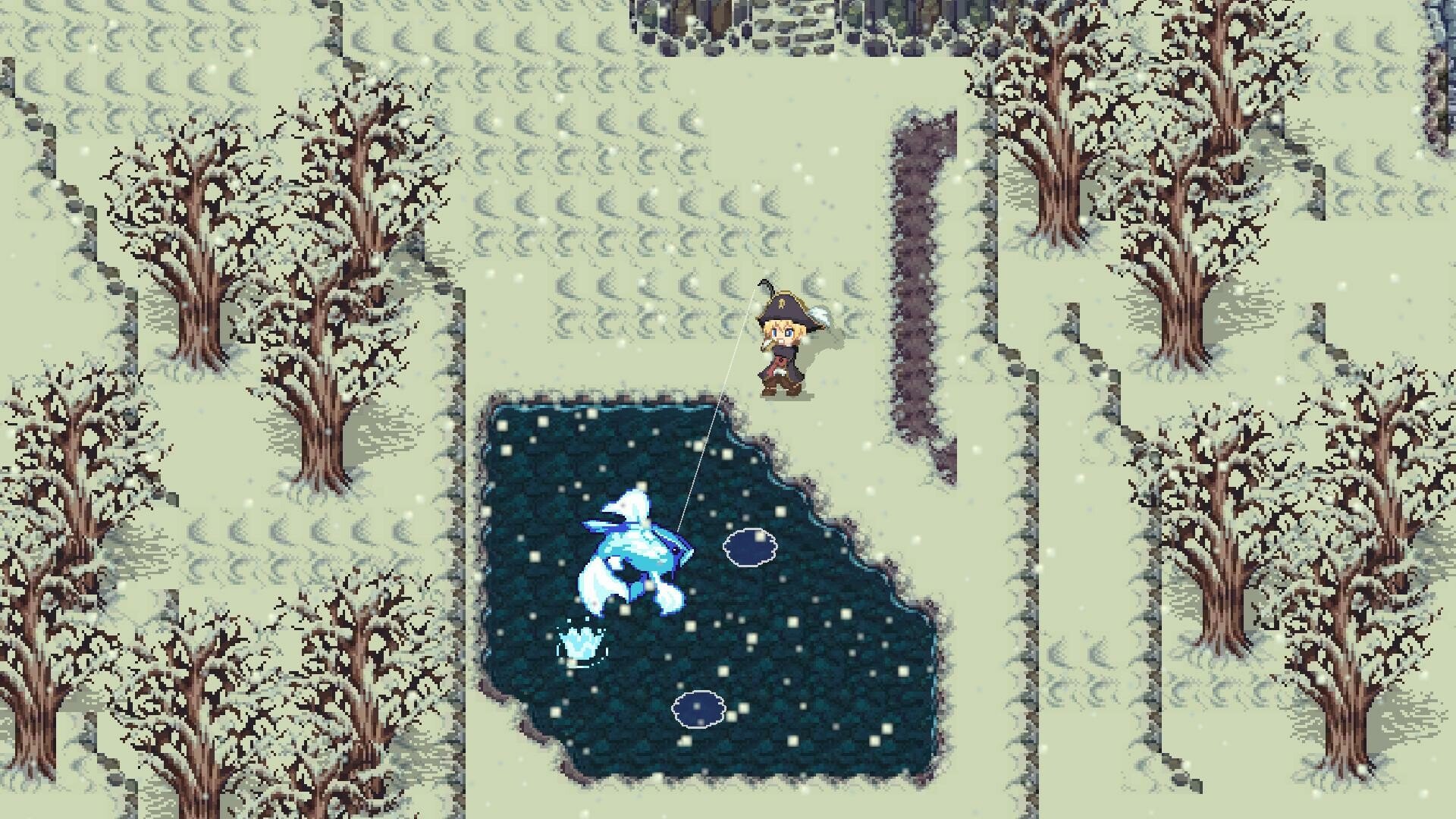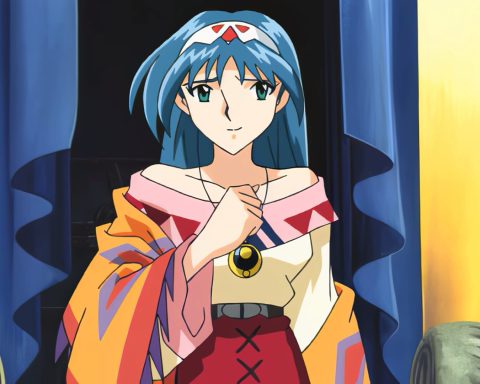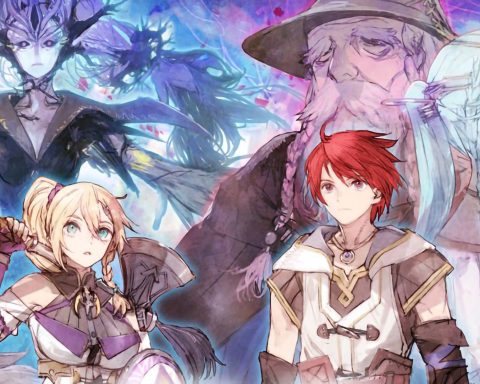There is an inherent contradiction at the heart of Dicefolk. It’s not a bad contradiction by any means, but it is one that, at first, gives the game an odd and offbeat vibe that’s difficult to get along with. As you plug along from there, however, Dicefolk’s charms start to come into their own.
The thing about Dicefolk is that it is, as the name suggests, a game about dice. You control a team of little monsters, and each of them has a dice attached to them. Those characters are arranged in a circle, and on each turn, the front character rolls a dice, giving you a couple of options for your turn. Your opponent does the same. The symbols on the dice allow you to attack, defend, use special abilities, or move the board around so that a different character is brought to the front lines. And here’s the first interesting quirk – not only do you get to choose the order in which your dice action plays out, but you actually get to choose for your opponent too.
This becomes pretty tactical quickly. You’ll move a weakened character out of the way, and then move a weakened enemy character in to finish them off with an effective attack. What starts with simple, stock-standard commands starts to build, too, with ranged attacks and other special abilities adding more tactical variety.
You unlock these additional abilities by “installing” them on your dice to replace the existing abilities that are on the dice face, and in this way, you have a lot of control over how your characters develop. And this brings me back to the odd contradiction and vibe that I initially got from Dicefolk: On the one hand this is a game that is fundamentally about rolling dice. On the other, it’s a game about having a great deal of control over everything.
Dice are an inherently random mechanic to throw into games. Dice are popular in casino games because there is no way for players to strategise the number that shows up. Dice are popular in Dungeons & Dragons because you might have the greatest armour and weapons, and be able to kill the mighty dragon on a roll of 2-20 on a twenty-sided die, only to roll that “impossible” 1, to the laughter of the entire table. In fact, the one edition of Dungeons & Dragons that was unpopular was the one that tried to reduce the reliance of dice and give players more certainty over the outcome of their actions.
People play games with dice because the random outcomes add excitement to the action. It’s also strategic because you need to, as much as possible, prepare for those times when the dice go against you. If you’re playing a game of Risk, and somehow manage to lose 20 soldiers to your opponent’s 2 defenders because the dice just didn’t go your way, then you better be prepared for a counter-attack with those depleted resources.
But Dicefolk’s two major mechanics – the ability to frequently tailor your dice and the ability to manipulate your opponents – bring a lot of certainty to what is meant to be random. It’s not necessarily easy (though by roguelike standards it does take a long time for Dicefolk to become challenging), but the challenge comes from the escalating strength of the opponents, not the random quality of the dice.
As I mentioned, this is not an inherently poor contradiction, having a dice-based game that actively seeks to undermine the random quality of dice. One of the reasons that the vogue in board games is to get rid of dice is that tactical play is more rewarding and helps to keep all players invested right to the end. But then those board games do away with the dice. Not look for ways to fundamentally change the role that dice have in a game.
Once you move past this, Dicefolk has a lot going for it. As a roguelike, there’s more randomness to the enemies and level design than the dice rolls, and it is always fun to have to adapt to changing conditions on the fly. Dicefolk has a very strong Slay the Spire quality to it, and there aren’t very many indie games that are better to ape than that one.
At the same time, there’s not much creative direction in the game for that same reason. Dicefolk’s art is simple to the point of being clip art-ish and, frankly, not particularly enjoyable. I never got the urge to play around with different monster combinations and make parties out of my favourites that a Pokemon or Shin Megami Tensei inspires in me. I was also less than impressed that a game all about dice failed to provide the joy of watching a dice roll around the screen. People who are right into their board games collect dice for a reason. The colours and design of them are a personal statement, and while Dicefolk was lifting ideas from every indie darling in existence, the developers should have looked at how Armello makes virtual dice rolling a joy, and dice design a major in-game collectible.
Dicefolk gets a lot right, and the developers clearly thought hard about how to take a fundamentally dice-based game, and make something that players could enjoy as a tactical roguelike, where randomness does not result in frustrating failures. However, Dicefolk is, ultimately, a pastiche with very little of its own creative identity, and I do think this is going to limit its audience to only the most hardcore Slay the Spire fans. But, then again, it’s not my job to worry about the commercial viability of a game. For those who simply cannot get enough of roguelikes, Dicefolk is yet another one for you to play.
Buy the hottest games with Amazon.
By purchasing from this link, you support DDNet.
Each sale earns us a small commission.



